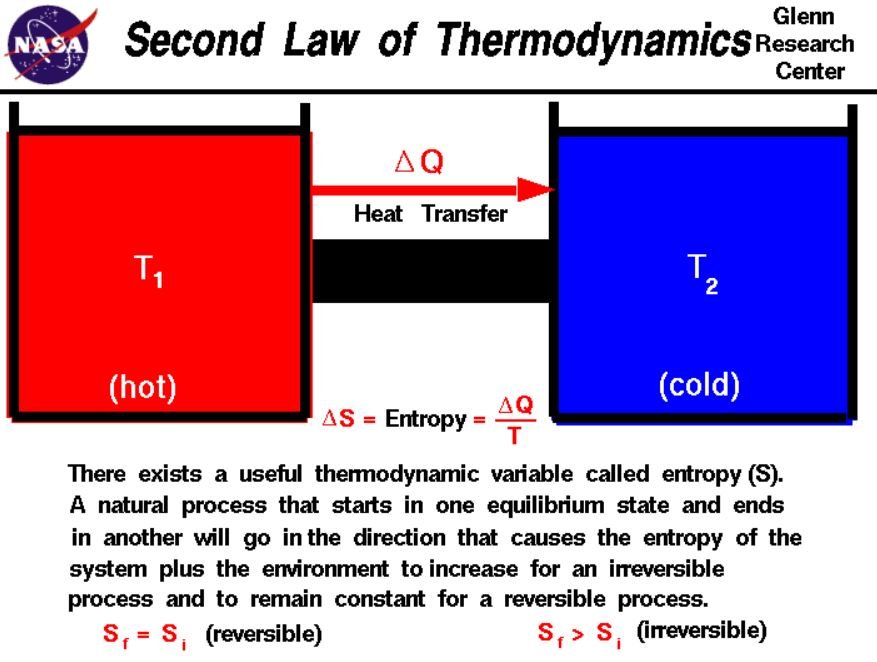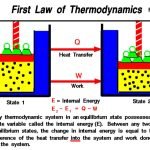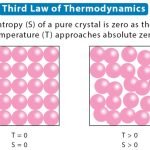We continue the laws of thermodynamics with the second law of thermodynamics. In our previous articles, we talked about it in general and made detailed explanations about the zeroth law and the first law of thermodynamics.
In this article, what is the second law of thermodynamics? We will try to find answers to our questions such as what are its limitations and what are its limitations?
What is Second Law of Thermodynamics
The second law of thermodynamics states that the entropy of isolated systems can never decrease. He explains the reason for this by the spontaneous formation of isolated systems from thermodynamic equilibrium (maximum entropy phase).
The second law of thermodynamics states that heat energy cannot be transferred from an object at a lower temperature to an object at a higher temperature without adding energy.

Different Statements of Second Law of Thermodynamics
The second law of thermodynamics can be explained in many specific ways. The most important of these are described by “Rudolph Clasius” (1854), “Lord Kelvin” (1851) and “Constantin Caratheodory” (1909). These statements are based on general physics terms, based on the principle of the impossibility of exact processes. Clasius’s and Kelvin’s statements are considered equivalent.
Carnot’s Principle
The historical origin of the second law of thermodynamics is Carnot’s principle. This principle demonstrates the Carnot machine cycle. Carnot machine; It regulates the heat and work transfers in a constant balance with its internal thermal information. This machine is an idealized device that attracts the attention of engineers interested in the efficiency of heat engines.
Carnot’s principle was introduced after the basic understanding of classical theory and before the mathematical explanation of the first law of thermodynamics and entropy. Interpretation of the First Law. The Second Law of Thermodynamics has become easier to understand. This is still true even today.
Clausius Statement
German scientist Rudalf Clausius established the second law of Thermodynamics by examining heat and work transfers. (1850) his explanation of this law is known as the “Clausius statement”: (Germany 1854)
Heat never passes from a cold object to a warm object without some changes.
Heat cannot pass from hot areas to cold areas suddenly and without doing work. This can be proven by an ordinary frostbite. Inside a freezer, heat can move from cold to hot and only when an external force is applied.
Kelvin Statement
Lord Kelvin stated the 2nd law as follows: It is impossible to derive any substance cooled by means of dull material, by the coldest object around it.
Planck Principle
In 1926, Max Planck wrote an important paper on the foundations of thermodynamics.
With this article, he showed that the internal energy in closed systems increases by an isochosic adiabatic process.
This formulation did not mention heat and temperature or entropy and was not indirectly tied to these concepts; but it carried the content of the Second Law. The statement he adhered to was: “friction force can never do positive work”. Using the old forms of the words, Planck wrote: “The production of heat by friction is not reversible.”
Equality of Clausius and Kelvin Statement
Let’s imagine that an engine operates in Kelvin expression. For example, someone consumes heat and completely transforms it into “work”. The clear and unique effect of this newly built machine includes two motors. Transferred heat:
- Δ𝑄=𝑄(1𝜂−1)
As a result, the incongruity of the Kelvin expression also means the incongruity of the Clausius expression; the new Clausius expression also implies the Kelvin expression. We can also find this in a way that the Kelvin expression implies the Clausius expression. So these two expressions are equivalent.





